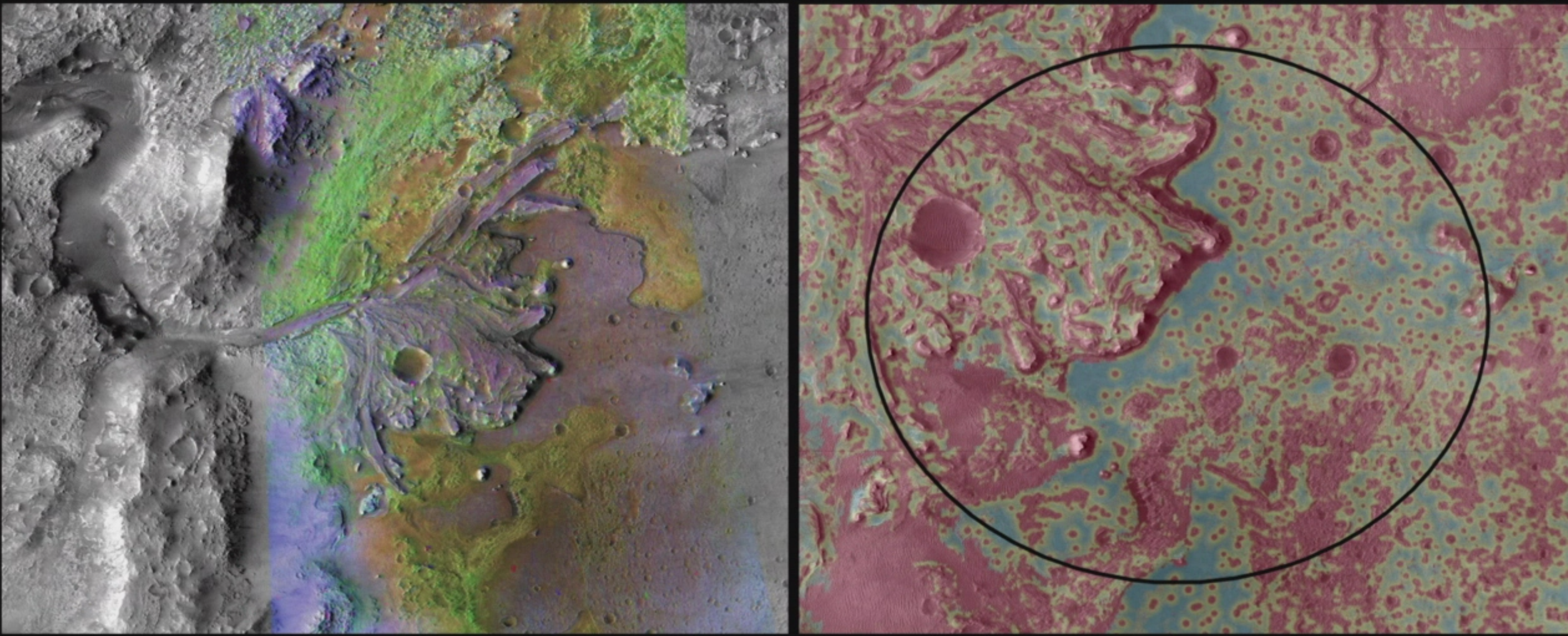In a stunning revelation that reshapes our understanding of Mars’ ancient environment, NASA scientists have confirmed that the Jezero Crater once hosted multiple, changing lakes—with water conditions evolving over time from harsh and acidic to neutral and even alkaline. This dynamic history of water activity points toward a planet that may have once been capable of sustaining microbial life.
The discovery, made possible through NASA’s Perseverance Rover mission and cutting-edge analysis from Rice University, provides the clearest evidence yet that Mars’ watery past was not a one-time event but rather a series of environmental transformations. Using advanced mineral-mapping algorithms, researchers identified three major phases of water-related alteration, each leaving behind unique chemical and geological signatures in Jezero’s rocks.
This article explores the discovery in a point-by-point and paragraph-based structure, offering a clear, SEO-friendly breakdown of how Mars’ lakes changed, how the evidence was found, and what it means for the search for ancient life.
1. The Importance of Jezero Crater in Mars Exploration
The Jezero Crater, located on Mars’ western edge of the Isidis Planitia basin, has been a focal point for scientists since satellite imagery revealed ancient river deltas and fan-shaped deposits—clear evidence that water once flowed there billions of years ago. The crater spans roughly 45 kilometers in diameter and is believed to have formed around 3.8 billion years ago during the Noachian period, a time when liquid water was stable on Mars’ surface.
NASA chose Jezero as the landing site for the Perseverance Rover precisely because of its geology. The site combines sedimentary rock formations, river channels, and deltaic structures, making it ideal for studying how water once shaped Mars’ surface. The sediments trapped within the crater’s delta could also preserve ancient organic compounds—potential biosignatures that hint at past life.
By studying Jezero, scientists aim to reconstruct Mars’ hydrological history and determine whether its watery environments were ever habitable.
2. The Mission: Perseverance’s Role in Revealing Mars’ Past
Launched in July 2020 and landing in February 2021, NASA’s Perseverance Rover has one of the most sophisticated payloads ever sent to another planet. Its mission goals are clear:
- Characterize the geology and climate of Mars.
- Search for signs of ancient life.
- Collect rock and soil samples for future return to Earth.
- Test technologies that will support human exploration of Mars.
To achieve these goals, Perseverance carries several advanced instruments:
- PIXL (Planetary Instrument for X-ray Lithochemistry): Detects chemical compositions at microscopic scales.
- SHERLOC (Scanning Habitable Environments with Raman & Luminescence for Organics & Chemicals): Searches for organic compounds and minerals.
- SuperCam: Analyzes rock textures and elements using laser spectroscopy.
- RIMFAX (Radar Imager for Mars’ Subsurface Experiment): Provides subsurface data on sediment layers and geological structures.
By combining these instruments, scientists can decode the mineral fingerprints left by ancient water interactions in Jezero Crater.
3. The Discovery: Changing Lakes and Multiple Water Phases
The new findings, published in 2025, reveal that Mars’ water systems went through at least three distinct phases. Using Perseverance’s PIXL data and a computational tool called MIST (Mineral Identification by Stoichiometry) developed by Rice University, scientists analyzed the chemical compositions of Jezero’s rocks at a microscopic level.
They identified 24 distinct mineral species, grouped into three alteration episodes that correspond to different types of water activity:
Phase 1: Hot, Acidic Water Alteration
- The earliest rocks in Jezero’s crater floor show minerals like greenalite, hisingerite, and ferroaluminoceladonite.
- These minerals form under high-temperature and acidic conditions, suggesting the presence of hot hydrothermal fluids.
- Such environments likely resulted from volcanic activity or subsurface heating, which caused water to react chemically with basaltic rock.
- These conditions were harsh and corrosive, making them unfavorable for life as we know it.
This phase paints a picture of Mars’ early environment as volatile and geologically active, with boiling, acidic water reshaping the landscape.
Phase 2: Neutral, Moderate Water Conditions
- As Mars’ environment cooled, the water chemistry shifted to more neutral pH levels.
- Minerals such as minnesotaite and clinoptilolite began to appear.
- These form under moderate temperature conditions similar to hydrothermal systems on Earth that host microbial life.
- This phase indicates that Mars may have once had stable lakes and groundwater systems that could have been habitable.
During this time, the Jezero Crater might have resembled Earth’s ancient hot springs or shallow lakes—places where life often thrives.
Phase 3: Cool, Alkaline, Life-Friendly Water
- The final phase revealed minerals like sepiolite, a clay mineral that forms in cool, alkaline environments.
- Alkaline water conditions are particularly important because they can stabilize organic molecules and support microbial life.
- These minerals are found widely across Jezero, suggesting a large-scale, stable lake system.
- This phase represents the most life-friendly environment Mars may have ever had.
This late-stage evolution implies that Jezero’s lake underwent gradual transformation from acidic to alkaline, becoming progressively more suitable for sustaining microbial ecosystems.
4. How Scientists Identified These Phases
The discovery was made possible through an innovative approach combining in-situ chemical mapping and data modeling. Perseverance’s PIXL instrument collected X-ray spectra from rock samples, providing elemental data for each spot. The MIST algorithm then analyzed this data to identify mineral compositions based on chemical stoichiometry.
By comparing these minerals to their Earth analogues, scientists inferred the temperature, pH, and duration of water-rock interactions. This process is akin to reading a geological diary—each mineral tells a story about the conditions under which it formed.
The results were cross-referenced with RIMFAX radar data, which revealed layered sedimentary structures consistent with fluctuating lake levels. Together, the mineral and structural evidence confirmed that Jezero’s water environment changed over long timescales.
5. Implications: A Once-Habitable Mars
The implications of these findings are profound. If Mars experienced multiple water phases—especially neutral and alkaline ones—it means the planet once had conditions that could support microbial life.
- Alkaline water provides a stable chemical environment conducive to prebiotic chemistry.
- Clay minerals like sepiolite can trap organic molecules and protect them from radiation.
- The long duration of water-rock interactions indicates that these environments persisted for millions of years, allowing potential biological processes to take hold.
While there’s no direct evidence of life yet, Jezero’s mineralogy provides the strongest habitability evidence ever found on Mars.
6. What This Tells Us About Mars’ Climate History
Mars wasn’t always the dry, frozen desert we see today. The presence of multiple water phases suggests a complex climate evolution involving cycles of heating, cooling, and volcanic activity.
- Early Mars (Phase 1) was geologically active, producing hot acidic fluids.
- Later, as volcanic activity waned, the climate stabilized, allowing neutral and alkaline lakes to form.
- Eventually, as Mars lost its atmosphere and magnetic field, the surface water evaporated or froze, leaving behind mineral clues of its dynamic past.
This climate transition mirrors what planetary scientists call the Noachian-Hesperian boundary, marking Mars’ shift from a wet world to a cold, arid planet.
7. Why Jezero Crater Was Chosen for the Mission
NASA’s decision to land Perseverance in Jezero was strategic. Jezero’s delta deposits and ancient river channels make it one of the most promising sites to search for signs of past life.
Here’s why:
- Sedimentary layers act as time capsules, preserving organic molecules and microfossils.
- The river delta indicates long-term water activity, not just short-term flooding.
- The clay-rich deposits have a high potential for storing biosignatures.
In other words, Jezero offered everything astrobiologists dream of—a place where water, sediment, and time came together to possibly nurture life.
8. Perseverance’s Toolkit: How the Rover Collects Evidence
Each of Perseverance’s instruments plays a specific role in decoding Mars’ story:
- PIXL: Determines the elemental makeup of rocks, crucial for identifying water-altered minerals.
- SHERLOC: Uses ultraviolet light and Raman spectroscopy to detect organic compounds.
- SuperCam: Provides visual and chemical analysis from a distance.
- RIMFAX: Peers below the surface to reveal buried sediment layers.
- MOXIE (Mars Oxygen In-Situ Resource Utilization Experiment): Tests how oxygen can be generated from the Martian atmosphere—a key step for future human missions.
Together, these instruments allow Perseverance to not only study the rocks but also collect and cache samples. These samples are expected to be returned to Earth by a future Mars Sample Return (MSR) mission, enabling laboratory-level analysis.
9. What Scientists Are Saying
According to Dr. Kirsten Siebach of Rice University, who led the study, “The diversity of minerals in Jezero’s crater floor tells us that Mars’ water history was far more complex than we thought. We’re seeing evidence of both acidic and alkaline conditions, meaning the planet went through multiple, evolving phases of habitability.”
NASA’s Perseverance science team echoed this sentiment, noting that Jezero’s mineral record is “a geological archive of changing water chemistry and potential habitability.” Each new rock sample offers a deeper look into how Mars’ lakes evolved—and whether life could have taken hold during the more stable phases.
10. The Bigger Picture: Mars’ Habitability Timeline
When we place Jezero’s findings in the context of Mars’ broader geological history, a clear timeline emerges:
- ~4.0 Billion Years Ago: Mars had active volcanoes, a thicker atmosphere, and surface water.
- 3.8–3.6 Billion Years Ago: Jezero Crater filled with a large lake; rivers deposited sediments rich in minerals.
- 3.5 Billion Years Ago: Changing climate caused lake water to fluctuate, leading to different mineral formations.
- After 3.2 Billion Years Ago: Mars gradually lost its magnetic field, atmosphere, and liquid water.
This means that for hundreds of millions of years, Mars may have experienced alternating wet and dry cycles, similar to early Earth—conditions that could foster prebiotic chemistry.
11. What the Findings Mean for Future Missions
The discovery of changing lakes and life-friendly phases has direct implications for upcoming missions:
- The Mars Sample Return (MSR) mission will retrieve the samples Perseverance has cached, providing the opportunity to confirm organic materials or microfossil structures.
- The ExoMars Rover (Rosalind Franklin), set to launch in the late 2020s, will drill beneath Mars’ surface to look for preserved biosignatures.
- These results will also guide future human exploration by identifying regions where ancient water—and potentially usable resources—once existed.
Jezero Crater may one day serve as a landing site for astronauts, offering both scientific interest and potential access to subsurface ice or hydrated minerals.











